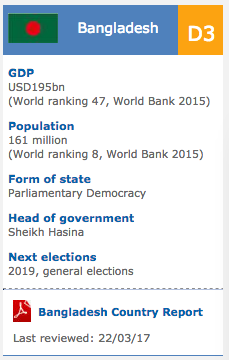Colombia: Colombia Agriculture Profile 2012
2012/03/01
Colombia Agriculture Profile 2012
Reference Date: 15-June-2011
|
FOOD SECURITY SNAPSHOT
|
Good outlook for 2011 maize and rice production, despite heavy rainfall
Harvesting of the 2011 main cereal crops, particularly rice and maize, has begun. Rainfall during the agricultural season that began in February/March was above average throughout most of the country as a result of the La Niña phenomenon until the first few months of the year, leading to localized losses of maize. As a result of government measures to stimulate production after the losses caused by flooding the year before, it is estimated that the area sown to rice and maize in 2011 (main and secondary season) will be greater than that of 2010. This increase will be higher in the case of maize due to its high prices on the international market. It is estimated that production of rice and maize will be each 4 percent higher than last year.
Prices of rice and maize increasing
Prices of rice and maize in May increased by 14 and 5 percent respectively compared to their levels in April. This increase is due to heavy rainfall that is affecting early harvesting operations in the production regions of the country and the transportation of the crops. Prices of wheat flour have been rising since mid-2010, reflecting the increasing trend on the international market as the country imports substantial amounts of wheat. In May, prices of wheat flour were 40 percent higher than last year.
Reference Date: 28-September-2010
|
FOOD SECURITY SNAPSHOT
|
Recent heavy rains might hamper harvesting of the main cereal cropping season
Harvesting of rice is underway with preliminary favourable estimates
Prices of major staples generally stable or decreasing
 Recent torrential rains along the Caribbean coastal region caused a sudden increase in river water levels descending from the Sierra Nevada. High water levels have raised concerns that flooding and landslides may result in damaging the standing crops. In the rest of the country, rainfall volumes have been generally average or favourably above average, benefiting crop recovery from the earlier prolonged drought conditions and the late onset of rains, particularly in the northern departments.
Recent torrential rains along the Caribbean coastal region caused a sudden increase in river water levels descending from the Sierra Nevada. High water levels have raised concerns that flooding and landslides may result in damaging the standing crops. In the rest of the country, rainfall volumes have been generally average or favourably above average, benefiting crop recovery from the earlier prolonged drought conditions and the late onset of rains, particularly in the northern departments. Rice harvesting is underway in the major producing departments of Tolima, Huila, Meta and Casanare and preliminary estimates point to an increase in production of about 5 and 16 percent compared to 2009 and the last five years’ average, respectively. On 26 August, in an effort to guarantee adequate prices to local farmers and sell the domestic production, the government has temporary banned rice imports. Colombia’s major rice suppliers are Peru and Ecuador.
Rice harvesting is underway in the major producing departments of Tolima, Huila, Meta and Casanare and preliminary estimates point to an increase in production of about 5 and 16 percent compared to 2009 and the last five years’ average, respectively. On 26 August, in an effort to guarantee adequate prices to local farmers and sell the domestic production, the government has temporary banned rice imports. Colombia’s major rice suppliers are Peru and Ecuador. In August, wholesale prices of rice are approximately 14 percent lower compared to the levels of the same period two years ago, although they remain more than 6 percent above the price of August 2009. The price of yellow maize has been decreasing from May and in August 2010 it was 15 and 3 percent lower than the levels recorded in the same period in 2009 and 2008, respectively. Similarly yellow maize was traded in August at a level 15 percent lower than in2008.
In August, wholesale prices of rice are approximately 14 percent lower compared to the levels of the same period two years ago, although they remain more than 6 percent above the price of August 2009. The price of yellow maize has been decreasing from May and in August 2010 it was 15 and 3 percent lower than the levels recorded in the same period in 2009 and 2008, respectively. Similarly yellow maize was traded in August at a level 15 percent lower than in2008.
- Related Articles
-
东帝汶农业概况
2012/08/27 更多
-
- Colombia News
-
- ISRAEL: Netanyahu to pioneer new diplomatic grounds in Latin America
- ISRAEL: Netanyahu’s Historic Latin American Tour to Highlight Israeli Tech Sector
- ISRAEL: PM Netanyahu leaves on historic visit to Latin America
- AFGHANISTAN: UNWTO: International tourism – strongest half-year results since 2010
- ARGENTINA: Odebrecht agrees to pay $220 million fine, aid Panama probe
- COLOMBIA: Colombia introduces tax reforms to bolster state coffers
- Trending Articles
-
- EUROPE: Ball Corporation Debuts Three New Aluminium Beverage Can Sizes
- SOUTH AFRICA: Nigeria and South Africa emerge from recession
- CHINA: Xi Jinping opens BRICS Summit in Xiamen, asks members to shelve differences
- NIGERIA: The Security and Exchange Commission approves the 40th Annual General Meeting of Oando PLC
- AUSTRALIA: Western Australia joins two-thirds of country to ban fracking
- WORLD: How fair is our food? Big companies take reins on sourcing schemes








